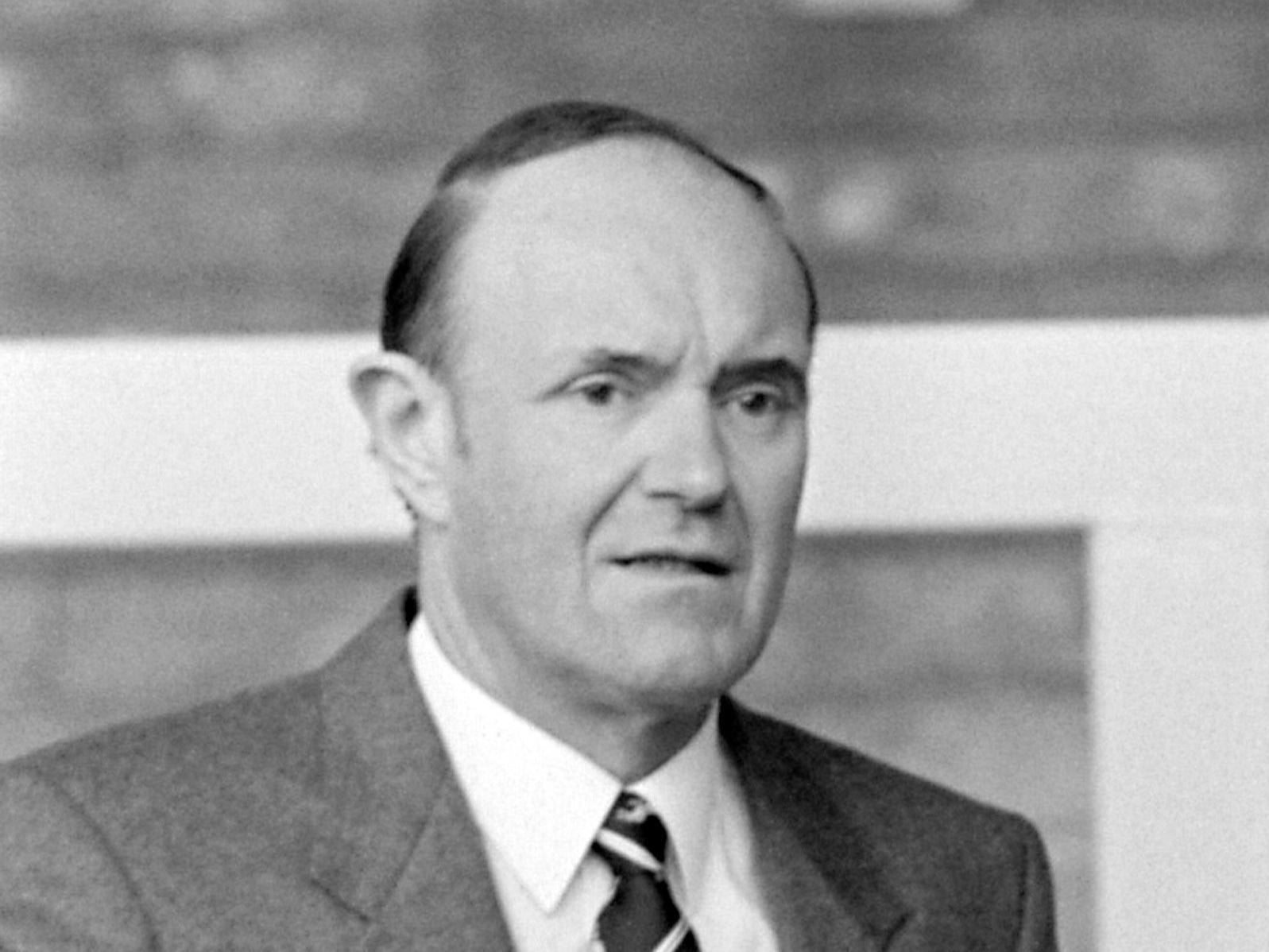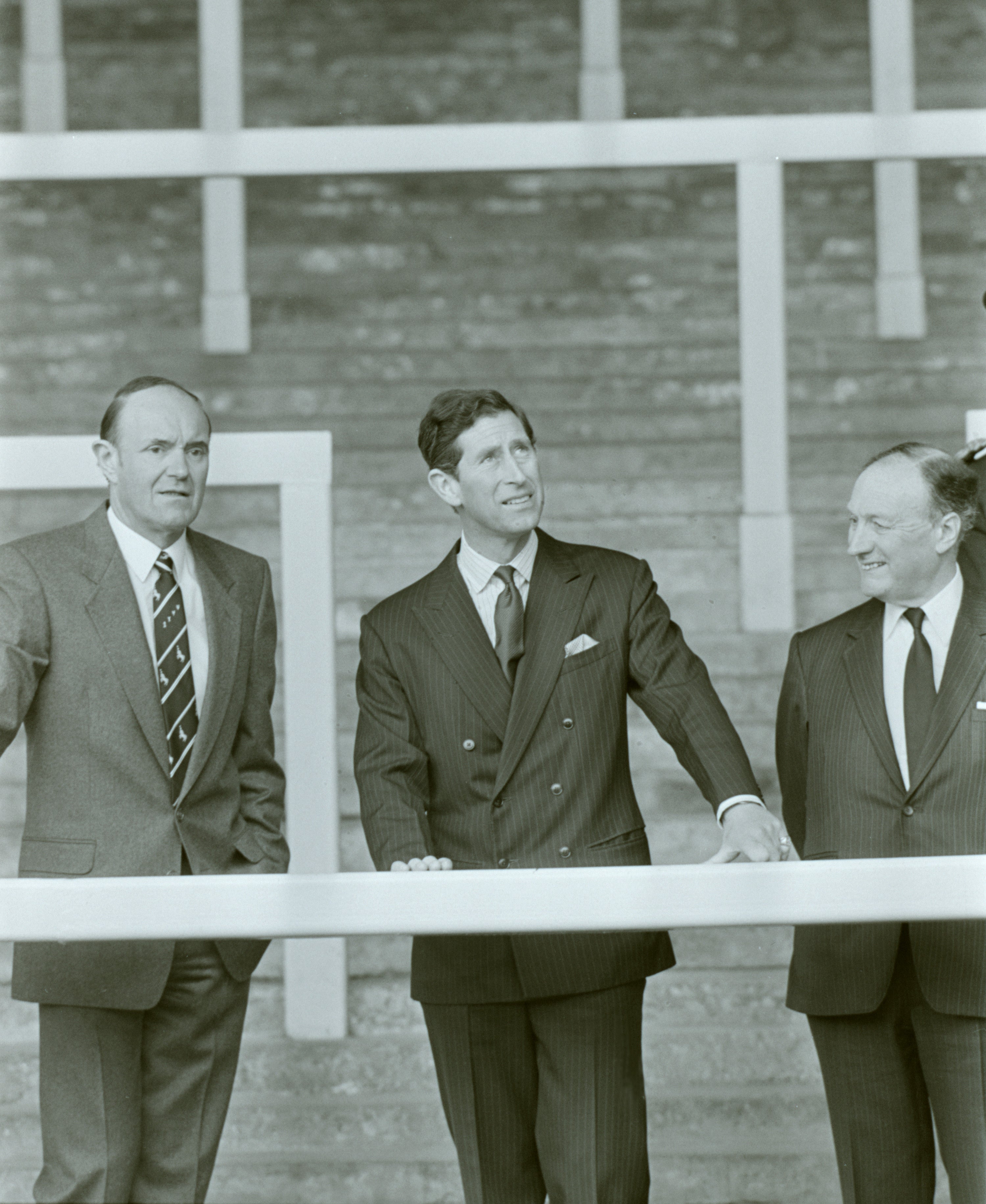Peter Robinson was the quiet genius behind Liverpool’s success
Robinson’s characteristic calmness acted as a counterbalance to the rollercoaster of emotion that often unfolded during his 35 years at Anfield, writes Tony Evans


Peter Robinson was not part of Bill Shankly’s “holy trinity.” The legendary Liverpool manager spoke of the relationship between the “the players, the manager and the supporters” as being all that mattered.
Shankly had a knack of turning a clever phrase but in reality he knew better. To function properly, a club needs stability in the boardroom and good sense behind the scenes. Robinson, who has died aged 86, brought both to Anfield.
He joined Liverpool in 1965 as club secretary and departed 35 years later after a spell as chief executive. In that time Liverpool made the journey from Merseyside’s second team to the dominant side in Europe. Alongside John Smith, the chairman, Robinson provided an environment where Shankly could thrive and an infrastructure that allowed the success to continue after the Scot resigned in 1974.
Known as ‘PBR’ inside Anfield, Robinson was reticent and thoughtful, so much so that some suspected he was shy. There were enough big characters at Liverpool and his calmness acted as a counterbalance to the emotional roller-coaster that unfolded in front of the Kop. When big decisions needed to be made, Robinson could be relied upon to act rationally.
The Boot Room dynasty that followed Shankly seems so obvious now that appointing Bob Paisley appears to be the most straightforward decision. At the time there were huge questions about whether the club should go in a different direction. The brains trust in the boardroom were as important as the Boot Room think tank. The genius in backing Paisley – who won nothing in his first season – was the key decision that kick-started a decade that delivered four European Cups, seven titles, a Uefa Cup and four League Cups.
During this run Robinson was one of the driving forces in Liverpool’s adoption of shirt advertising. A deal was agreed with Hitachi in 1979, illustrating the club’s creative approach to cashing in on their success. In Robinson’s early-80s heyday Anfield was at the cutting edge in generating revenue. They spent it well, too, with the club secretary ensuring that Liverpool got the best deals in transfer negotiations.
This era of unrivalled glory was brought to an abrupt halt by the Heysel Stadium disaster, where 39 mainly Italian fans were killed in a crush precipitated by a charge by Liverpool supporters before the 1985 European Cup final against Juventus in Brussels. Robinson had warned Uefa that the stadium was unfit for a game of this magnitude. In the aftermath, he behaved with dignity and sensitivity.
One of the aspects of his personality was that he shrunk away from showing off. In 1986, when Liverpool won the title on the last Saturday of the season, the Football League suggested that the trophy presentation could take place before the FA Cup final against Everton a week later. Robinson was appalled by the notion. Instead, the team received the silverware before the midweek Super Cup match against Norwich City. It was a low-key occasion – the competition had been introduced to fill the void left by the European ban and had deteriorated into farce – but receiving the trophy at Wembley would have antagonised their great rivals. Plus, the pre-match ceremony brought some extra bodies through the turnstiles before the unattractive fixture against Norwich. It was an astute move all around.
Robinson was as shocked as anyone by Hillsborough. He was involved in the decision to leave Anfield open on the Sunday after the tragedy that caused the death of 97 people. People flocked to the stadium to pay their respects and mourn together.

The 1989 disaster affected everyone associated with the club and, in the ensuing years, Liverpool lost their direction. The seamless managerial conveyer belt – Joe Fagan replaced Paisley and was then followed by Kenny Dalglish – was disrupted by the awful events in Sheffield. Dalglish stepped down in 1991, his equilibrium undermined by Hillsborough and its consequences, and instead of giving the manager time to recover, the club turned to Graeme Souness, a former captain, but the Boot Room lineage was broken.
Dalglish wanted to come back and it reached the point where he was expecting a summons from Robinson. The phone call never came. The sure-footedness of the late 1960s, 70s and 80s was no longer as reliable. Manchester United were forging ahead on the pitch and in marketing terms and Liverpool’s place at the forefront of English football slipped away.
Robinson’s parting gift was to persuade Gerard Houllier to come to Anfield but even that was botched. The Frenchman’s joint managership with Roy Evans was doomed to failure and was always fated to bring humiliation to the long-serving Scouser, who was the last of the Boot Room boys.
After his retirement Robinson was able to indulge in his first sporting love, cricket. Perhaps his slight emotional distance from football allowed him to see the game more clearly and operate with objectivity.
He was admired by rivals and helped create a warm, welcoming atmosphere at Anfield – at least off the pitch. The club was in the safest pair of hands under Robinson’s watch. The haul of 29 major trophies during his tenure is testament to his quiet genius.






Join our commenting forum
Join thought-provoking conversations, follow other Independent readers and see their replies
Comments